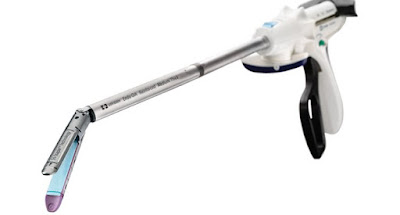Hernia is one of the common conditions affecting a large percentage of population worldwide. Over one million hernia repair surgeries are performed each year, many of which use hernia repair devices and consumables. Thus, there is an increasing demand for hernia repair devices and consumables, which in turn is driving the hernia repair devices and consumables market. The most common types of hernia are incisional (resulting from an incision), inguinal (inner groin), umbilical (belly button), femoral (outer groin), and hiatal (upper stomach). The most common laparoscopic techniques for inguinal hernia repair are totally extraperitoneal (TEP) repair and transabdominal preperitoneal (TAPP) repair.
More than 3 million hernia mesh repair surgeries are carried out worldwide every year. Growth of the hernia repair devices and consumables market, in North America, is mainly driven by the increasing prevalence of hernia, especially in the United States. According to the Food and Drug Administration (FDA), in the U.S., more than one million hernia repairs are performed each year. Of which, around 800,000 are performed to repair inguinal hernias and the rest are for other types of hernias. This in turn is expected to increase the demand for hernia repair devices and consumables. Moreover, the FDA considers hernia repair devices to be safe, but admits that complications may occur in rare cases. These complications can be fatal.
There are three main types of hernia surgery: open repair, robotic repair, and laparoscopic (minimally invasive) repair, and there are three treatment options, such as surgery, medication, and change in lifestyle. Symptoms such as vomiting, pain, heartburn, constipation, and others can be observed during certain activities such as walking or running. Hernia mesh, or surgical mesh, is a medical device used to support and hold organs in place after surgery, attached to the area surrounding the hernia with glue, staples, or stitches. Hernia mesh are of three types, such as biologic, composite, or synthetic. Hernia mesh devices are used to provide additional support to weak/damaged tissue.
Moreover, increasing geriatric population is also expected to increase the demand for hernia repair devices and consumables. Elderly patients are more prone to have inguinal hernia due to weakened abdominal musculature. According to the World Health Organization (WHO), by 2050, the world's population aged 60 years and older is expected to total 2 billion, up from 900 million in 2015. This in turn is also expected to augment growth of the hernia repair devices and consumables market, worldwide. However, a hernia repair device manufacturer has to satisfy various clinical and regulatory requirements before launching the product. Which may act a potential barrier for the market growth.



No comments:
Post a Comment